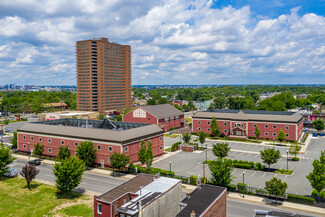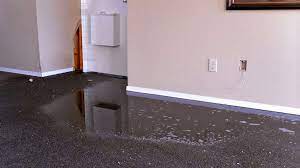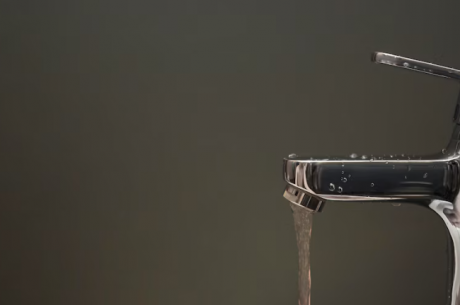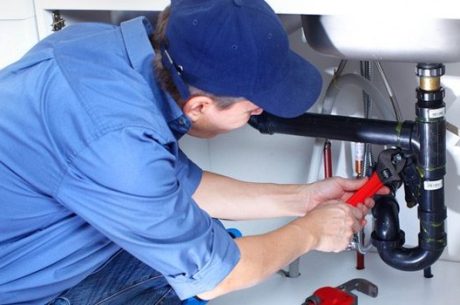Water, though essential for life, can be a destructive force when it infiltrates commercial properties. Whether it’s due to a burst pipe, a natural disaster like a hurricane, or other causes, water damage can wreak havoc on businesses. In this guide, PuroClean Emergency Recovery Service New Jersey provides invaluable insights into restoring commercial properties after water damage. If you ever find yourself facing such a situation, don’t hesitate to reach out to us at (877) 750-7876 for immediate assistance.
Understanding the Unique Nature of Water
Water is a remarkable substance, making up nearly 70% of the Earth’s surface. It possesses unique properties, including the ability to exist in three states – liquid, solid (ice), and gas (vapor) – under typical planetary conditions. This versatility, however, also makes it a potent agent for destruction when it infiltrates commercial structures.
While natural disasters like hurricanes make headlines, they are not the leading cause of water intrusion and water damage in commercial properties today. Water damage can result from various sources, including construction errors, plumbing failures, freezing, and inadequate maintenance. In this guide, we explore the various types of water damage and the necessary steps for effective restoration.
The Rapid and Devastating Impact of Water
Water can cause extensive damage to commercial properties in a short period. It is highly destructive to common materials such as wood, paper, building materials, and electronics. Promptly removing water from contact with affected items is critical to minimizing damage. Even after surface water is removed, items left in standing water can continue to deteriorate.
In the case of floods, the water is often contaminated with sewage, animal waste, fertilizers, and industrial pollutants. In such situations, the water is considered a biohazard. Furthermore, mold and mildew can cause irreparable damage to building materials and contents, persisting even after standing water is eliminated.
Types of commercial water damage
HVAC Failures
Air conditioning units are frequent sources of water leaks in HVAC systems due to clogged drains, freezing evaporator coils, and malfunctioning condensate pumps, often requiring regular cleaning. Hot water systems and heaters, while efficient, can cause significant damage when they fail. Underfloor heating is becoming more popular due to rising environmental standards.
An incident reported by Chubb involved a leaking HVAC coupling that released over 12,000 gallons of water, costing a manufacturing plant around $4 million.
IoT systems can mitigate such risks with leak detection sensors around HVAC joints, temperature sensors to monitor heating and cooling mechanisms, and gas sensors to detect dangerous refrigerant gases.
Plumbing Leaks
Plumbing fixtures like pipes, toilets, baths, and sinks are prone to leaks due to frequent use. Even a small crack can lead to significant water damage, particularly in multi-residential buildings and hospitality accommodations, with toilets being the most common source of leaks.
Frequent leaks can increase water bills and repair costs, potentially damaging multiple units and causing business interruptions. LAIIER’s IoT water detection sensors can be applied around plumbing components to detect small leaks, while water flow sensors can monitor for clogs or pressure issues.
Appliance Leaks
Appliances such as washing machines, dishwashers, and water heaters often leak due to aging parts or clogs, typically occurring during operation and potentially causing rapid flooding. Regular maintenance and timely replacement of parts are crucial to prevent such leaks.
Water leak detection sensors can help identify leaks before they become major issues.
Roof and Wall Leaks
Roof leaks are common in commercial buildings due to rain, snow, wind, and poor maintenance, with flat roofs being particularly susceptible to water pooling. Walls, exposed to the environment, can also develop leaks through features like lights, HVAC units, and window frames.
Sensors can help prevent water damage by monitoring leaks in roofing materials, around windows and doors, and in drains and gutters. Structural health monitoring sensors can detect water damage or pooling.
Flooding, Groundwater, & Sewage
Flooding and sewage backups are complex and messy, often resulting from excessive rain or river overflow. IoT solutions can detect flooding near bodies of water, though building-specific solutions are still in development.
Sewage blockages can be managed with flow sensors in drain and sewage pipes to detect blockages, water level sensors to monitor abnormal levels, and smart valves to prevent further blockages and backflow.
Types of Water Damage Services
To address water damage effectively and efficiently, specific steps are typically followed by professional water damage contractors and experienced water restoration companies:
Step 1: Identify Affected Areas
Using specialized equipment, professionals can accurately detect and measure moisture and humidity levels. Thermo-hygrometers and thermal imaging cameras may also be employed to assess the extent of the damage.
Step 2: Determine the Category of Water
Understanding the source of the water is vital for health and safety considerations. Water damage restoration classifies water into three general categories:
Category 1 (“Clean” Water): Water from a clean source with no substantial risk of causing sickness or discomfort. It must not have been present for an extended period, and affected materials must be clean and well-maintained. Examples include broken water supply lines and sink overflows with no contaminants.
Category 2 (“Grey” Water): Water with a significant degree of chemical, biological, and/or physical contamination. Sources include aquarium leaks, toilet bowl overflows (that contain urine), and dishwasher or clothes washer discharges.
Category 3 (“Black” Water): Water intrusion from a grossly unsanitary source or carrying disease-causing agents. Examples include sewage system discharges.
Step 3: Establish a Drying Plan
Water Extraction
The key to a swift drying process is the immediate removal of standing water. Efficient water extraction can prevent the escalation of damage. It’s essential to remove as much water in its liquid state as possible. This is why timely contact with a professional commercial water damage restoration provider is crucial. Rapid response ensures a quicker return to normalcy for your commercial properties.
Drying & Dehumidification
After excess water is removed, the remaining moisture needs to evaporate. Air-moving equipment facilitates this process, while dehumidification equipment removes moisture from the air. Professionals use a formula to determine the appropriate amount of equipment needed to effectively dry the affected area.
Temperature Control
Controlling the temperature in the affected area is vital to expedite evaporation and dehumidification. Temperature also plays a role in microorganism growth.
The Key to Recovery After Commercial Water Damage in New Jersey
When water damage strikes your commercial properties, every minute counts. The teams at PuroClean Emergency Recovery Service New Jersey possess the knowledge and equipment to perform all water damage services.
If your commercial building or facility experiences water damage, contact us as soon as possible. Swift action is essential to minimizing damage and getting your business back on track. Reach out to PuroClean Emergency Recovery Service New Jersey at (877) 750-7876 to benefit from our expertise and restore your commercial property after water damage.




 PuroClean Emergency Fire, Water and Mold Damage Restoration New Jersey
PuroClean Emergency Fire, Water and Mold Damage Restoration New Jersey